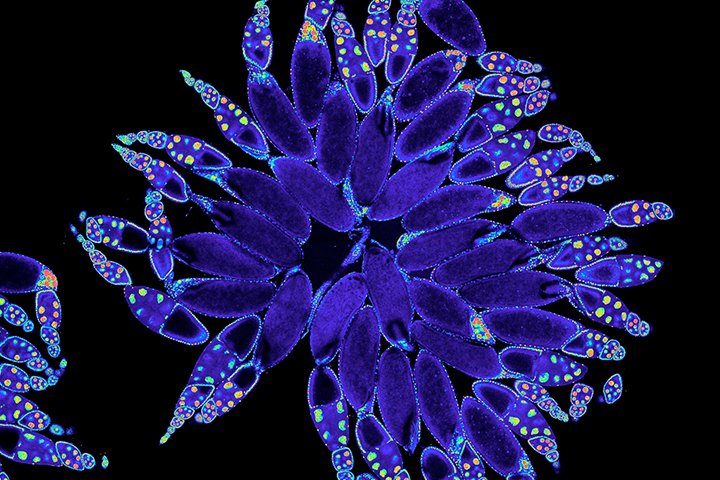Clinical Resources
-
The ISSCR Continuing Education Course, Stem Cell Medicine: From Scientific Research to Patient Care, is an essential resource for clinicians, scientists, and healthcare providers seeking reliable information on stem cell medicine. Accredited by Harvard Medical School. Learn more.
-
These concise highlights provide the current state of stem cell science for specific diseases, including background on the disease, rationale for using cell-based therapies, evidence for specific approaches and current status of the field with respect to clinical trials. Learn more.
-
The ISSCR has released a comprehensive new guide to help researchers and industry leaders bring PSC-derived therapies safely and efficiently to clinical trials and commercial use. Developed by global experts, the document outlines key principles for quality, regulatory compliance, and translational success across nine regulatory jurisdictions. Learn more.
-
A professional standard for information that needs to be provided to patients (or their legally valid surrogates) to help them make an informed decision if offered stem cell-based interventions outside of a formal clinical trial. Learn more.
-
A professional standard for information to be provided to women who, after making a final decision to have a planned pregnancy termination, have expressed interest in donating tissue from the fetal remains. Learn more.
-
background and fundamental questions for clinicians and ethics/institutional review committees to ask when considering running or reviewing early phase, cell-based clinical trials. Learn more.

Disease Fact Sheets
Concise highlights providing the current state of stem cell science for specific diseases, including background on the disease, rationale for using cell-based therapies, evidence for specific approaches and current status of the field with respect to clinical trials. Information for patients and the public on how stem cells are being used to treat some diseases can be found at About Stem Cells.
-
The death of RPE and photoreceptors, along with the presence of intact inner retinal cells, provides a potential rationale for cell replacement therapy for the outer retina and the RPE, which are the primary sites of damage and degeneration in AMD. Several approaches have been explored to replace macular RPE cells, with several clinical trials currently underway to evaluate the safety and efficacy of submacular RPE cell injections from a variety of sources.
-
Clinical Status: There are no clinical trials aimed at replacing the motor neurons lost in ALS. However, there are completed and ongoing trials using stem cells to modulate disease progression in ALS. These trials have generally used bone marrow-derived mesenchymal stem cells (MSCs), which are typically expanded in culture and then transplanted into the cerebral spinal fluid (CSF). Other approaches, such as injections of human fetal spinal cord-derived neural stem cells and genetically engineered neural progenitor cells releasing GDNF, have also reached clinical trials. Additionally, there has been a small Phase 1 trial using autologous Tregs. Download the ALS Fact Sheet to learn more information about these trials and find additional resources.
-
Clinical Status: While cell-based therapy could become a viable treatment option for clinical application for lung disease in the future, there is no definitive evidence that these cells have a therapeutic benefit. Furthermore, there are still many significant factors to be considered in any future trials such as the best source of MSCs; the route of administration and the most effective dose to trial before MSC administration is considered a safe and effective treatment option. More basic research is needed to further develop the possible use of epithelial cells as a cell-based therapy for lung disease, even before clinical trials can be done.
At present there are no licensed cell-based therapies for lung diseases in the U.S or globally (Ikonomou et al 2019; Sipp et al. 2017). It is critical that patients are well informed regarding the current lack of efficacious cell-based therapeutic options. Patients considering such treatments need to understand that current cell-based therapies for lung disease are unproven, experimental, and are not under appropriate regulatory oversight.
-
The proof of principle for replacing beta cells in diabetes was first demonstrated through organ donor (allograft) pancreas transplants, which can achieve insulin independence in individuals with T1D, post-pancreatectomy diabetes and those with T2D who require insulin. While the islet transplant approach has demonstrated the benefits of replacing beta cells in both T1D and T2D, as well as in individuals requiring total pancreatectomy, this approach is limited by the availability of donor organs. As a result, there has been an intense interest in the diabetes community regarding the potential for stem cell-based beta cell replacement for patients with diabetes who require insulin therapy.
-
Clinical Status: To date, there is no effective treatment for HD. Over the past few years, researchers have focused on both the role of neuronal and glial dysfunction in causing neuronal and synaptic dysfunction of HD. As a result, both neural and glial transplantation-based strategies, using progenitor cells produced from human pluripotent stem cells, are under intensive preclinical development. These studies have strongly suggested the therapeutic potential of a cell replacement strategy in HD, whether accomplished by neural or glial progenitor cells. As a result, efforts are now underway in several centers to produce clinically appropriate populations of both neural and glial progenitor cells for intracerebral transplantation in symptomatic HD patients.
-
Clinical Status: Several cell-based clinical studies have been conducted for various types of liver disease, including acute and metabolic liver disease, as well as liver cirrhosis. Encouraging clinical results have emerged from hepatocyte transplantation for metabolic liver diseases such as Crigler Najjar, glycogen storage disease type 1, and urea cycle disorders. Currently, there is no clear evidence supporting the efficacy of cell-based therapies for liver cirrhosis. Therefore, the use of cell-based therapies for liver cirrhosis cannot be recommended outside properly funded clinical trials. There have been encouraging results from studies that have sought to grow liver cells in the laboratory from various sources including pluripotent stem cells (iPSC) and adult stem cells taken from healthy human livers. Recent research suggests that human hepatocytes and biliary cells can be expanded as organoids, potential allowing them to be used as cell therapies for treating metabolic and acute liver disease, as well as serving as a cell source for treating biliary disease. Cell-based approaches focused on modulating the liver’s innate immunoregulatory microenvironment have also gained attention. A recent first-in human Phase I trial of autologous macrophage peripheral infusion into cirrhotic patients has been performed and shown to meet its primary outcome of safety and feasibility, and a Phase II randomized controlled multi-center trial is ongoing9 . A Phase I safety study, Macrophage Therapy for Acute Liver Injury (MAIL), is currently underway to investigate the use of allogeneic macrophages from frozen stocks for treating acute liver injury.
-
Clinical Status: The provision of new, healthy glial progenitor cells, which give rise to new myelin-producing oligodendrocytes, is under development as a potential treatment strategy, with the tandem goals of stabilizing disease by preventing further neuronal loss and restoring function by remyelinating demyelinated neuronal axons. In preclinical work thus far, methods have been developed for producing large numbers of homogeneous, deliverable human glial progenitor cells from pluripotent human stem cells, including both embryonic and induced pluripotent stem cells. These cells have proven effective at remyelinating white matter lesions in a variety of both postnatal and adult animal models of acquired demyelination; their potential use as cellular reagents for treating PMS is under review by the FDA.
-
Clinical Status: Clinical trials began in the early 2000s with transplantation of bone marrow stem cells, followed by cells derived from adult hearts. These trials demonstrated that cell therapy for acute MI or chronic heart failure is feasible and generally safe for patients. Early trials with small numbers of patients suggested the possibility of improved cardiac function but as the field moved into larger trials that were randomized, blinded, and placebo-controlled, there were fewer indications of improved function. Taken together, the consensus now is that adult cells have only modest, if any, benefit to cardiac function (Eschenhagen et al, 2017). The first trials of human pluripotent stem cell derivatives were recently performed, with “patches” of human cardiac cells placed onto the surface of the failing heart (Menasché et al, 2018). Early results suggest that this approach is feasible and safe, but it is too early to know whether there are functional benefits.
-
Unproven cell-based therapies to treat OA are used worldwide despite limited evidence from high-quality studies. In the United States, current experimental cell therapies for OA primarily involve cells obtained from autologous, minimally manipulated tissues, such as concentrated bone marrow aspirate (BMAC) and micro-fragmented adipose tissue (MFAT). When administered by appropriately trained clinicians, these treatments appear largely safe. Studies have demonstrated pain relief with cell therapies for knee OA, but more rigorous randomized trials have mostly revealed similar pain relief compared to standard care of treatments, and none have shown significant cartilage regeneration indicative of an arthritis cure.
-
Clinical Status: Over the last 15 years, technologies and protocols have evolved to the point that midbrain dopamine neurons can now be made from both embryonic stem (ES) and induced pluripotent stem (iPS) cell sources, which show good survival in animal models of PD and demonstrate functional benefits. This work has progressed to the point where the first in-human clinical trials have started. The first one was initiated at Kyoto University in Japan 2018. Similar clinical trials using ES cells have also been initiated in both the USA and Europe. The USA trial conducted by BlueRock Therapeutics has been completed and showed that the approach was well tolerated with no major safety issues and with some early signs of graft survival and effect. A phase 2 trial is planned. In Europe, the STEM-PD trial, an academic trial involving Lund University/University Hospital in Sweden and Cambridge University/University Hospital in UK was initiated in 2023 and is still ongoing. In addition, a single case report of a patient receiving autologous iPSC-derived dopamine cells has been published. Download the PD Fact Sheet to learn more information about these trials and find additional resources.
-
Clinical Status: Currently, most patients with LDs can only be offered supportive treatment; few disease-modifying or curative strategies are available. Metabolic LDs due to enzymatic dysfunction, including the lysosomal storage diseases such as globoid cell leukodystrophy, and peroxisomal disorders like drenoleukodystrophy, may be offered HSCT/USCT. However, the benefits of this approach are limited to mild and early-diagnosed cases; this approach cannot restore cells already lost, or repair damage that has already occurred. For that purpose, cell replacement therapy with human neural or glial progenitor cells is under development. This approach was first trialed in a phase I safety study in patients with Pelizaeus-Merzbacher disease, a congenital leukodystrophy characterized by mutations in the gene coding proteolipid protein (PLP), which is required for myelination. This study provided the first proof of principle that human NPCs transplanted into the cerebral white matter are well tolerated and could engraft the white matter of affected children. Yet the use of fetal tissue-derived cells hindered the further development of this strategy. As a result, more recent efforts have focused on the use of glial progenitor cells derived from human pluripotent stem cells.
Comprehensive Roadmap for PSC-derived Therapy Development
The Best Practices for the Development of Pluripotent Stem Cell-Derived Therapies is a comprehensive, interactive document that addresses critical areas of the translational pipeline and key decision points essential for successful translation to a licensed therapy. Uniquely, the document presents a global perspective of the regulatory landscape while also providing resources for critical processes and links to jurisdictional regulatory information. Intended for academic institutions, biotech, pharmaceutical companies, and manufacturers who have developed a robust protocol to develop a PSC derived therapy and conducted proof-of-concept animal studies demonstrating its intended use for a specific disease, the document highlights fundamental principles and processes across seven critical areas of development.
Informed Consent Standard for Stem Cell-Based Interventions
This document outlines a professional standard for the information that needs to be provided to patients (or their legally valid surrogates) to help position them to make an informed decision if offered stem cell-based interventions outside of a formal clinical trial. Stem cell-based interventions are complex and come with unique risks. The Consent Standard specifies the information that must be disclosed during the informed consent process, prior to administering any stem-cell based intervention outside of a clinical trial. Anyone offering stem cell-based interventions outside of a formal clinical trial should include these elements, along with anything else required by applicable laws, policies, practices, and regulations for informed consent.
Download full PDF:
Informed Consent Standard for Human Fetal Tissue Donation for Research
This document outlines a professional consent standard for the donation of human fetal tissue for any field of research. The information described in this standard should be provided to women who, after making a final decision to have a planned pregnancy termination, have expressed interest in donating tissue from the fetal remains.
Download full PDF:
Practical Advice for Physicians and Ethics / Institutional Review Committees
Stem cell-derived cellular interventions require a unique set of considerations that differ from those used to assess pharmacological drugs, so it’s essential that the physicians that run them and the ethics / institutional review boards that approve them are familiar with the appropriate questions to ask. The ISSCR's "Stem Cell-Based Clinical Trials: Practical Advice for Physicians and Ethics/Institutional Review Committees" provides background and fundamental questions for clinicians and ethics / institutional review committees to ask when considering running or reviewing early phase, cell-based clinical trials. The guide was developed by practicing physician-scientists and stem cell professionals on the ISSCR’s Clinical Translation Committee.
Download full PDF:




